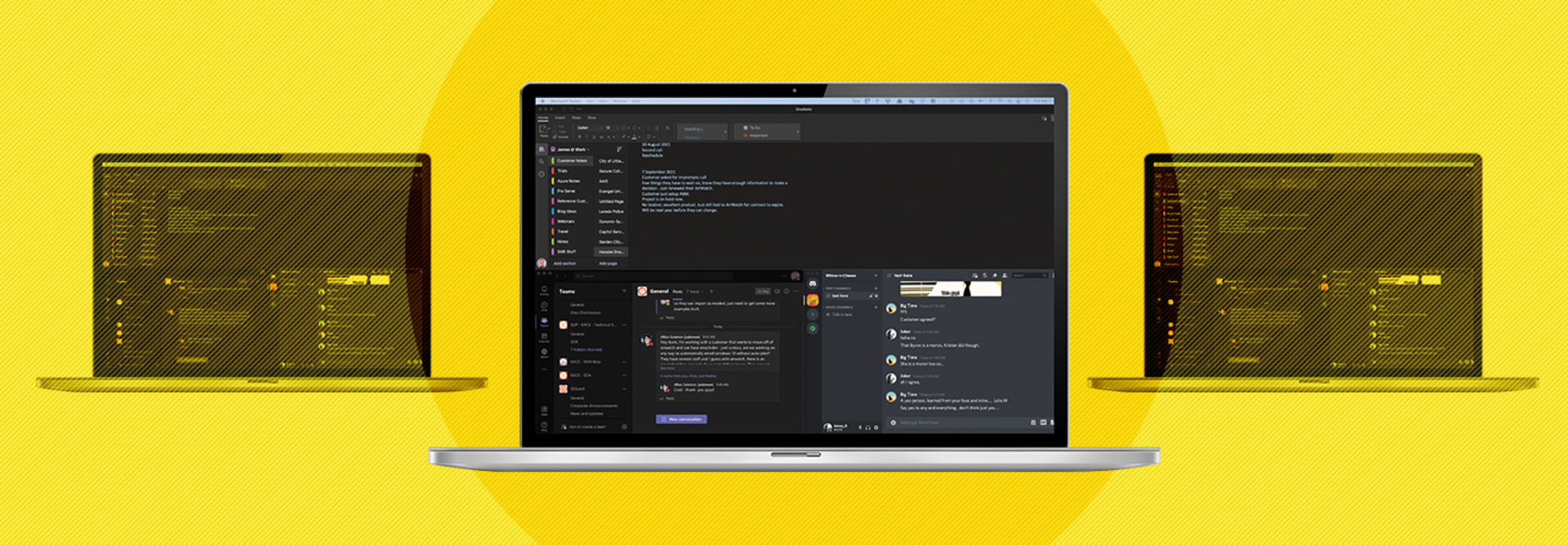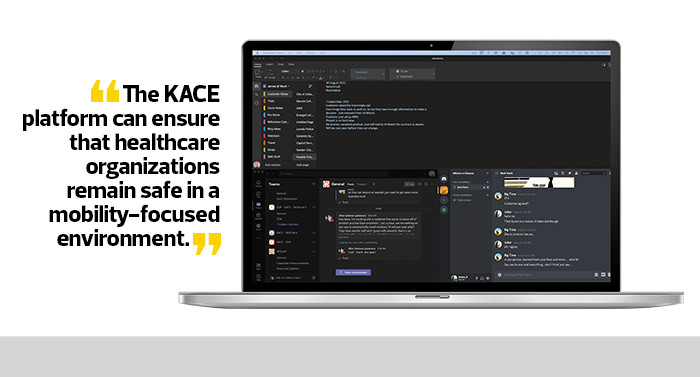The KACE Cloud Mobile Device Manager platform is easily set up using its cloud portal. From there, administrators can scan and monitor their networks to see the many devices that are attempting access. Healthcare IT leaders can then set policies, such as requiring that Windows devices have the latest security patches before being cleared.
The policies are granular, as is the visibility into each device. Administrators can set up policies where, for example, clinician devices are held to different standards than computers being used by hospital support staff. They can also differentiate between employee-owned devices and those provided by the healthcare organization.
KACE Cloud Mobile Device Manager Creates Ease of Discovery
KACE can discover and provide management for almost any kind of network device or computer. Traditional client operating systems such as Windows, Linux and Mac are supported, as well as iOS and Android mobile devices.
The KACE platform also recognized several Internet of Things devices within the test bed, as well as networking hardware such as a switch and a router. The platform even found a printer and allowed the setup of sensible policies regarding its network access.
RELATED: Learn 5 steps to secure Internet of Medical Things devices.
Along with the granular control offered to administrators, KACE provides a lifeline to users who may otherwise feel disconnected from IT support when working remotely. The platform has a built-in service desk feature that enables users to directly report issues they are having back to their IT teams. This ticketing system can make sure they quickly get the help they need.
As organizations continue to offer remote work options, the KACE platform can ensure that healthcare organizations remain safe in a mobility-focused environment.
The Right Prescription for Mobility Management in Healthcare
Mobile device management is one of the key features of the KACE Unified Endpoint Manager platform. Managing Android or iOS devices is sometimes a bit more complicated than working with on-premises systems such as desktops or servers. For one, even their portability can become an issue if they are lost or stolen.
That is why one of the major features of the KACE platform is the management of mobile devices. Organizations that want full control should probably own the mobile devices themselves, as few users will likely agree to turn over full control of their personal devices to their employers. As such, the most powerful features, such as remote wiping, are likely to be usable only with company-owned equipment, although the basic protection and policy enforcement works with everything.
For this test, several Android and iOS smartphones were added to the test bed being managed by the platform. All but one of the devices were considered owned by the organization, while the last one was configured like an employee-owned smartphone in a BYOD program.
DOWNLOAD THE WHITE PAPER: Find out why security should play an important role cloud adoption.
The KACE software easily detected the devices as they attempted to access the network. It was able to check the status of all devices and require that certain rules be met, such as having the latest operating systems, as a security policy before they were given full access to resources.
The platform was even able to require that specific applications be installed, such as the security or productivity software normally used by the organization. It also could ensure that required applications were always fully patched and up to date with the latest versions.
On the company-owned devices where the platform had full permissions, the control was even more advanced. Passwords could be reset. Devices could be located remotely, and they could be locked or forced to perform a factory reset. A test even completely wiped one device remotely, a great defense if a smartphone with protected or sensitive information is lost or stolen.
The level of control and protection offered by the KACE platform is impressive. It’s especially important to have solid remote management features when dealing with a large remote workforce operating in a field like healthcare with a lot of legally protected information.
The KACE platform can simplify that very complex process and allow clinicians and support staff to continue to work safely from either their offices or remote locations.
SPECIFICATIONS
Supported Operating Systems: iOS, Android, Windows, Linux and Mac
Supported Devices: IoT devices, printers, network hardware, smartphones, most others
Key Features: Discovery, patch management, security policy enforcement, data protection, provisioning, remote wiping
Interface Type: Cloud-based portal
Number of Management Terminals: Designed to be run from a single point










